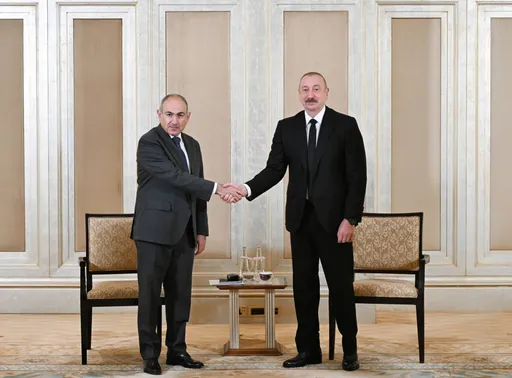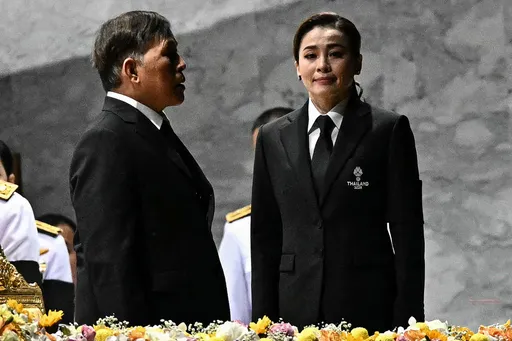Recently in my class on International Negotiation at the University of Sarajevo, I discussed the Oslo Accords with students and how it came into being. The benefit of hindsight and an almost three-decade-long historical lapse allows for a cost-benefit analysis of that diplomatic breakthrough.
From a Balkan perspective, with our frequent preoccupation with the Dayton Accords and its drawbacks, studying the successes and failures of other peacemaking efforts is useful to get a broader perspective. Comparisons of the two Camp David peace talks in 1978 and 2000 allows those of us in this part of Southeast Europe to think through the alternative trajectories that Dayton could have taken and the variety of counterfactuals that could have played out.
My job next year around this time will be somewhat easier with the inclusion of HBO's new film Oslo.
The one iconic image of the Oslo Accord is actually a handshake on the White House lawn in the summer of 1993. Almost thirty years ago, the official ceremony under the auspices of President Bill Clinton was highlighted by the famous handshake of Palestinian Liberation Organization (PLO) chairman Yasser Arafat and Israel's prime minister Yitzhak Rabin. The document signed by Rabin and PLO's Mahmoud Abbas was known as the Declaration of Principles on Interim Self-Government Arrangements, but has come to be universally known as the Oslo Accord.
The essence of the deal was mutual recognition between the PLO and Israel, and the establishment of a Palestinian Authority in Gaza and the West Bank. The unresolved and, admittedly, more difficult issues were to be negotiated at a later stage.
The agreement between the PLO and Israel marked a new chapter in Middle East peacemaking. The signing ceremony in Washington capped months of backchannel negotiations between Palestinian and Israeli representatives. The Norwegian mediation in facilitating these secret talks was instrumental and has since entered the international negotiation literature as a case study.
Released just two weeks ago, Oslo was directed by Bartlett Sher and is based on J.T. Rogers's Tony-winning play. The movie is a dramatisation of the painstaking backchannel negotiations in Norway from late 1992 to mid-1993.
In the year leading up to Oslo, several events dovetailed to make a secret channel viable. The PLO was trying to stay afloat and relevant. The first Intifada that began in 1987 showed, among others, that the PLO leadership in Tunisia was losing ground among the Palestinians. Arafat's support for Saddam Hussein in the First Gulf War alienated Arab states that had financially supported the PLO. When funds began to dry up, the PLO felt the pinch.
In fact, it has been argued that Arafat played perhaps one of his last trump cards by proceeding with both the Washington talks - which were stalemated - and the Oslo channel. Enter Terje Rod-Larsen and Mona Juul.
The Norwegian couple came up with the idea to use a research institute as an official host and a cover for the secret talks. Norway emerged as a curious choice for the role of a mediator, as the Scandinavian nation was one of the European countries most supportive of Israel.
According to the docu-series The Price of Oslo, Arafat wanted the Norwegians to play the mediator to Israel's Labour Party officials. Everything from the stationary to bills was disassociated from the Norwegian government. This arrangement provided all sides with plausible deniability.
In Norway, over the course of several months, PLO's Ahmad Qurei (Abu Ala) and Hassan Asfour began the negotiations with Israeli academics Yair Hirschfeld and Ron Pundak. As talks progressed, the Israeli negotiating team was joined by the Foreign Ministry's Uri Savir and Joel Singer. In fact, Savir, Singer and Qurei emerge as the main protagonists in Oslo whose negotiation is discreetly facilitated by the Rod-Larsen/Juul duo. The last stretch of talks was conducted in a made-for-TV hours-long indirect telephone negotiations between Qurei and Shimon Peres and mediated by Rod-Larsen.
The Oslo Accord established the PLO's foothold in Gaza and the West Bank and paved the way for the Jordanian-Israeli peace treaty in 1994. What was heralded as a breakthrough in 1993 in the years ahead turned into a failure to reach an agreement on major issues that were to be subsequently tackled. The failure of the Camp David peace talks in 2000 marked another major turning point.
In considering the legacies of successes and failures of peace talks - particularly Camp David I and II - a Bosnian or Balkan preoccupation with the deficiencies of the Dayton Peace Accords may be somewhat ameliorated.
Peace talks produce suboptimal outcomes. Facts on the ground - not ideals about how international politics function - are key determinants of a peace agreement. An ‘international community’ that a weaker party frequently appeals to and hopes for support does not exist. In essence, what peace agreements frequently achieve is a formal ratification of facts on the ground.
Dayton did precisely that.
For all the deficiencies of Dayton and the accompanying criticism, these US-led peace talks produced the least worst option compared to earlier European peace plans which openly envisioned the country’s partition. In other words, the counterfactuals to Dayton could have been worse than the peace accord that many are unhappy about. To paraphrase Tolstoy, each party to the Dayton Accords is unhappy in its own way.
In studying and teaching peace talks, it may be a challenge to convey the complexity of negotiations that unfolded decades ago. Documentaries and TV movies such as Oslo not only bring the story of secret negotiations to a wider audience but can also be used as an educational supplement for the younger generation of students.
Two additional TV movies or mini-series could similarly dramatise past peace talks: the 1978 Camp David talks that produced the first Arab-Israeli peace agreement between Egypt and Israel and the Camp David negotiations in 2000 that failed to resolve the issues not tackled by Oslo.
























